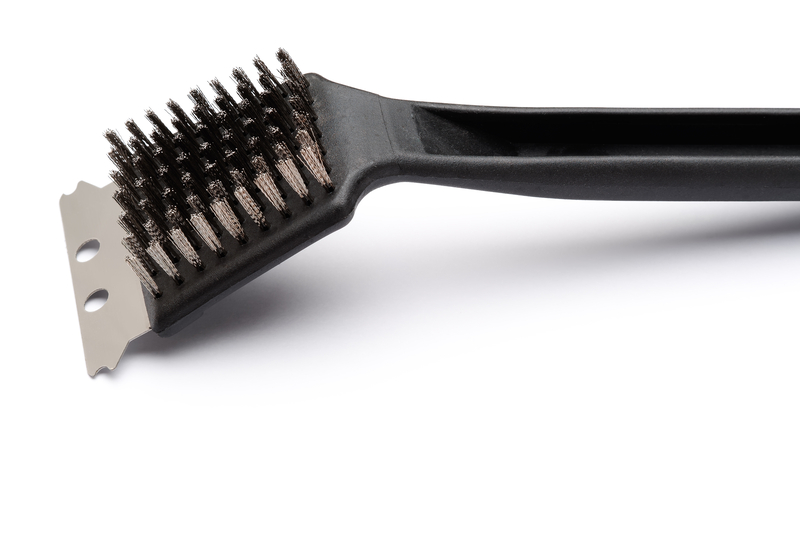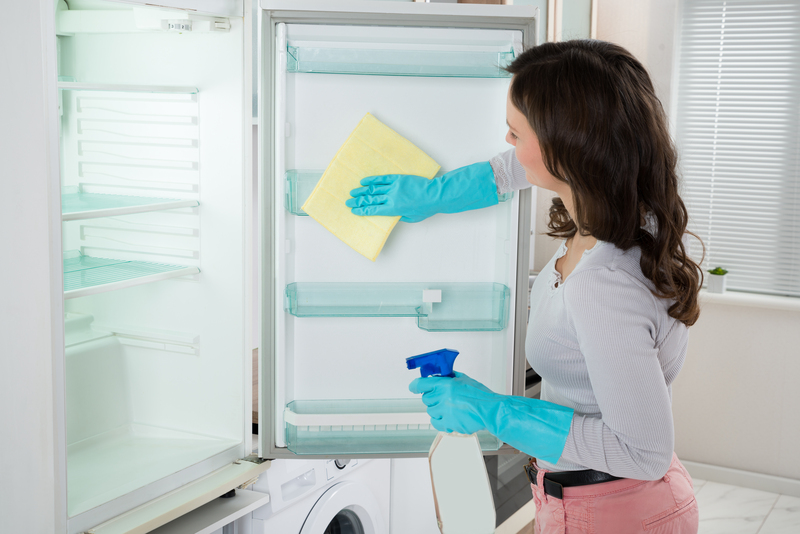The Art of Jewelry Cleaning: Making Your Gems Shine
Posted on 21/08/2025
The Art of Jewelry Cleaning: Making Your Gems Shine
Jewelry is more than just an accessory -- it's a reflection of your style, sentiment, and even cherished memories. Over time, however, even the most dazzling gems can lose their brilliance due to accumulated dirt, oils, and environmental factors. Performing proper jewelry cleaning is essential for keeping your pieces radiant and ensuring their longevity. In this comprehensive guide, we'll explore the art of jewelry cleaning -- from understanding different gemstones to mastering techniques and essential maintenance tips so you can make your gems shine like new.
Why Regular Jewelry Cleaning Matters
Whether you're wearing your favorite diamond ring every day or saving an heirloom necklace for special occasions, regular jewelry cleaning is a must. Here's why:
- Enhances Brilliance: Dirt, lotion, and natural oils can dull a gemstone's sparkle and the shine of metals.
- Prevents Damage: Built-up grime can cause abrasion and even degrade prong settings, increasing the risk of stone loss.
- Preserves Value: Well-kept, clean jewelry maintains its sentimental and monetary value over time.
- Maintains Hygiene: Rings and earrings are exposed to bacteria daily; cleaning them helps prevent skin irritations.

Understanding Your Jewelry: Metals and Gemstones
Not all jewelry is created equal. The methods and solutions that work wonders for one piece may harm another. Before starting your jewelry cleaning routine, familiarize yourself with the metals and gemstones in your collection.
Common Jewelry Metals
- Gold: Available in yellow, white, and rose varieties; soft and easy to scratch.
- Silver: Prone to tarnishing; requires specific cleaning techniques.
- Platinum: Durable, doesn't tarnish, but benefits from cleaning to maintain shine.
- Costume/Fashion Jewelry: Often plated metal or base alloys; needs gentle care to avoid flaking or discoloration.
Types of Gemstones
- Diamonds: Exceptionally durable, but their settings and mounts may be delicate.
- Rubies & Sapphires: Hard stones, but can still be scratched and damaged by harsh chemicals.
- Emeralds: Softer and often treated with oils, requiring gentle handling.
- Pearls, Opals & Turquoise: Porous and easily damaged by moisture, chemicals, and abrasion.
Jewelry Cleaning Methods: Step-by-Step Guide
Let's explore a variety of best jewelry cleaning techniques for every need, from routine maintenance to deep cleaning of neglected pieces.
1. Basic Home Jewelry Cleaning
For most solid gold, platinum, and hard gemstone jewelry, a gentle cleaning at home suffices:
- Soak: Fill a bowl with warm water and add a few drops of mild dish soap. Avoid hot water, which can cause certain gems to crack.
- Brush: Use a soft-bristled toothbrush to gently scrub the jewelry, especially around intricate settings and under stones.
- Rinse: Thoroughly rinse each piece under lukewarm running water. Ensure sink drains are closed to prevent accidental loss!
- Dry: Lay jewelry on a lint-free cloth to air dry, or gently pat with a microfiber cloth.
2. Cleaning Silver Jewelry
Silver jewelry tends to tarnish over time. To restore its lustre:
- Baking Soda Paste: Mix three parts baking soda with one part water, and gently rub onto the silver with a cloth or sponge. Rinse and polish.
- Aluminum Foil Method: Line a bowl with aluminum foil, add baking soda and boiling water. Place silver in the solution for 2-5 minutes to reverse tarnish, then rinse and dry.
Note: Do not use these methods on silver pieces with delicate or porous gemstones, as the process may damage them.
3. Cleaning Gold and Platinum Jewelry
Gold jewelry and platinum pieces can be restored with a simple detergent bath or specialized jewelry cleaners (always check product labels for suitability).
- Detergent Soak: Fill a bowl with warm water and a few drops of mild detergent.
- Brush: Use a soft toothbrush for intricate detailing.
- Rinse and Polish: Dry completely to prevent water spots.
4. Pearls and Delicate Gemstones
Pearls, opals, turquoise, and other delicate gems require extra special care:
- Wipe After Wearing: Always wipe pearls with a soft, damp cloth after each wear.
- Avoid Submersion: Never soak pearls or soft gemstones in water, as moisture can weaken stringing material or damage the stone's finish.
- Spot Clean: If necessary, use a cotton swab dipped in mild soapy water, then wipe dry with a soft cloth.
5. Ultrasonic Jewelry Cleaners
Ultrasonic cleaners use high-frequency sound waves to dislodge dirt. While effective for hard gem jewelry, they're not suitable for pearls, opals, or enameled items. ALWAYS check your jeweler's recommendations before using these machines.
Professional Jewelry Cleaning Services
While home cleaning is convenient, professional jewelry cleaning ensures safety and thoroughness -- especially for valuable or antique pieces. A professional jeweler will:
- Use specialized cleaning agents and tools
- Inspect settings and prongs for wear
- Polish and restore brilliance
- Advise on gemstone or metal-specific care needs
*Consider scheduling professional cleaning once or twice a year, particularly for engagement rings, wedding bands, family heirlooms, and intricate designs.*
Jewelry Cleaning Products: What to Use & Avoid
The market offers a myriad of diamond cleaning and jewelry care solutions. Here's how to select the right ones:
Safe Jewelry Cleaning Products
- Mild Dish Soap: Ideal for most metals and durable stones.
- Specialty Cleaners: Look for those labeled specifically for gold, silver, or gemstones.
- Baking Soda: Non-abrasive and effective for silver.
- Microfiber Cloth: Non-scratching and excellent for gentle polishing.
Products to Avoid
- Bleach and Chlorine: Can corrode or discolor gold and weaken metal alloys.
- Toothpaste: Abrasive and may scratch metals and gems.
- Ammonia (except occasionally for diamonds): Too harsh for many gemstones.
- Acetone and Alcohol: Can erode certain stones and finishes.
Tips and Tricks for Keeping Jewelry Clean Longer
Prevention is key when it comes to making your jewelry shine. Try these maintenance tips for lasting brilliance:
- Remove jewelry during chores: Take off rings and bracelets before using cleaning chemicals, gardening, or cooking.
- Wait after applying products: Let perfume, lotion, hairspray, and cosmetics dry before wearing jewelry.
- Store properly: Use soft pouches, lined jewelry boxes, or anti-tarnish papers to prevent scratches and oxidation.
- Rotate your pieces: Avoid wearing the same jewelry daily to minimize wear and tear.
Dealing With Common Jewelry Cleaning Problems
Tarnish and Discoloration
Silver tarnish is a common complaint, but even gold can take on a dull sheen if not cleaned. For persistent tarnish, repeat the cleaning process or consult a jeweler for professional buffing. Avoid harsh chemicals that could damage gems or finishes.
Loose Stones or Damaged Settings
If you notice a stone moving or prongs bending, stop wearing the jewelry immediately. Continuing to wear a compromised piece can result in lost stones and expensive repairs. Have the piece professionally examined and repaired, then resume your safe jewelry care routine.
Cloudy Diamonds and Gemstones
A cloudy appearance can be caused by accumulated oils or even scratches. Regular soaking and gentle brushing can restore clarity. If the gem remains cloudy after cleaning, it may indicate internal inclusions or permanent damage -- in which case, a professional appraisal is recommended.
The Ultimate Jewelry Cleaning Schedule
To keep your precious pieces gleaming, follow this suggested maintenance schedule:
- Daily: Wipe down frequently worn items with a clean, soft cloth.
- Weekly: Soak and gently brush rings and earrings worn every day.
- Monthly: Deep clean statement jewelry or items worn occasionally.
- Biannually (Every 6 Months): Schedule professional jewelry cleaning for valuable or intricate pieces.
Storing Clean Jewelry: Best Practices
Proper storage is essential for maintaining your jewelry's shine after cleaning. Here are the dos and don'ts:
- Do: Store in dry, soft-lined compartments or pouches. Pearls should be kept flat to avoid stretching the silk thread.
- Don't: Let pieces pile up together; contact can cause scratching and tangling.
- Do: Consider anti-tarnish strips for silver and gold pieces.
- Don't: Expose gems to direct sunlight for long periods, as some stones can fade.
Eco-Friendly Jewelry Cleaning Solutions
If you prefer natural alternatives, several green cleaning methods can help you maintain sparkling jewelry without harsh chemicals:
- Lemon Juice and Olive Oil: Combine for a gentle silver polish. Wipe on, rinse, and buff dry.
- White Vinegar: Soak silver items briefly for a quick shine.
- Club Soda: Restore sparkle to diamonds by immersing them in club soda for a few hours.
*Always test on a small area first to ensure no adverse effects, especially for sensitive gemstones.*

Frequently Asked Questions about Jewelry Cleaning
How often should I clean my jewelry?
Ideally, clean your most-worn pieces weekly, but at least once a month. Delicate pieces and family heirlooms may need professional assessment.
Can I use ultrasonic cleaners at home for all jewelry?
Ultrasonic cleaners work wonders for diamonds, sapphires, and rubies, but can damage pearls, opals, and some treated gemstones. Always check the specific care requirements for your gems.
Is professional cleaning necessary if I clean at home?
Home cleaning keeps your jewelry looking good day-to-day, but professional cleaning involves expert inspection of prongs, clasps, and settings, which prevents loss and irreparable damage.
Conclusion: Mastering the Art of Jewelry Cleaning
The art of jewelry cleaning is about more than simply restoring shine -- it's about loving, preserving, and caring for every cherished piece you own. By understanding your jewelry's materials, choosing the right cleaning methods, and fostering good habits, you can ensure your gems continue to captivate and shine for years to come. Whether you're maintaining a sparkling engagement ring or reviving an antique brooch, the right care will keep your treasures dazzling. Incorporate these cleaning practices into your routine and enjoy the continual pleasure of jewelry that truly shines.





